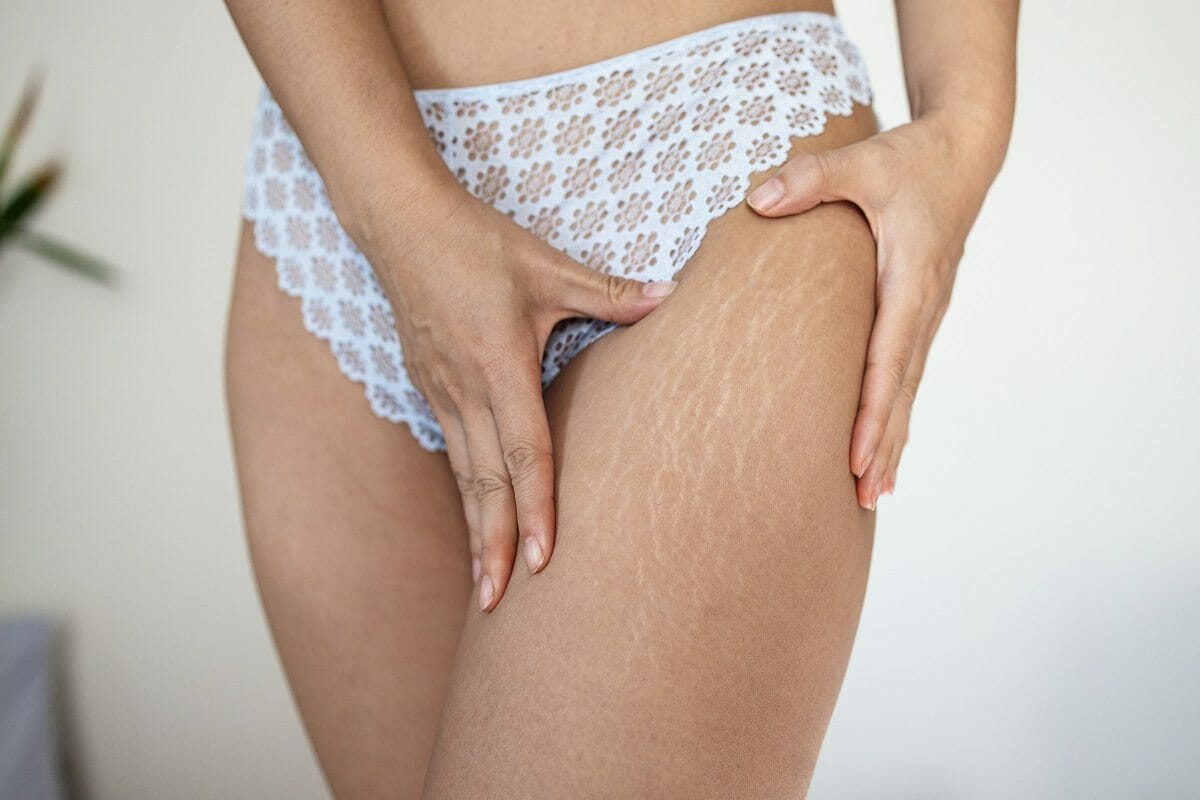Stretch marks, medically known as striae, have long been a topic of concern for many individuals when discussing body image. While often associated with pregnancy or rapid weight gain, it’s essential to explore how these skin changes can also occur with weight loss. This article delves into the relationship between losing weight and the development of stretch marks, their causes, prevention strategies, and management options.

What Are Stretch Marks?
Stretch marks are linear scars that can appear on various parts of the body, including the abdomen, thighs, hips, breasts, and upper arms. They typically start as red, purple, or dark brown streaks before fading to a lighter color over time. Stretch marks occur when the skin is stretched rapidly, causing the collagen and elastin fibers to tear. This tearing leads to the characteristic appearance of stretch marks.
Common Causes of Stretch Marks
While stretch marks are often associated with rapid weight gain or pregnancy, they can arise from several factors:
- Genetics: Family history can play a critical role in whether an individual develops stretch marks.
- Hormonal Changes: Hormonal fluctuations, especially during puberty, pregnancy, and certain medical conditions, can weaken the skin’s connective tissues.
- Rapid Growth: Instances of rapid growth during adolescence can lead to stretch marks due to the swift stretching of the skin.
- Medical Conditions: Some medical conditions, such as Cushing’s syndrome or Marfan syndrome, are linked to the development of stretch marks.
Can You Get Stretch Marks from Losing Weight?
Yes, you can develop stretch marks from losing weight, particularly if the weight loss is rapid. The relationship between weight loss and stretch marks may seem counterintuitive, as many might associate these skin changes with weight gain. However, the same principles of skin stretching apply here.
Mechanism Behind Stretch Marks from Weight Loss
When an individual loses weight, especially a significant amount, their skin may not contract at the same pace. If the skin has been stretched due to weight gain and then suddenly experiences a loss of volume, it can lead to a situation where the skin’s elasticity is compromised. This disparity can cause the underlying collagen and elastin fibers to tear, resulting in the formation of stretch marks.
Factors Influencing Stretch Marks During Weight Loss
- Rate of Weight Loss: Losing weight too quickly—often defined as more than 1-2 pounds per week—can increase the likelihood of developing stretch marks. A gradual weight loss allows the skin time to adjust and shrink naturally.
- Body Composition: The amount of weight lost and body fat distribution can influence the likelihood of stretch marks. Significant fat loss, particularly in areas where skin elasticity is lower, can increase the risk.
- Skin Elasticity: Factors such as age, genetics, and skin type play a role in how well the skin can bounce back after weight loss. Older skin or skin with a history of stretch marks may be more susceptible.
- Hydration and Nutrition: Proper hydration and nutrition can affect skin health, and a diet lacking in essential nutrients may hinder skin elasticity.
Prevention Strategies
While it may not be possible to completely prevent stretch marks, there are practical strategies that may help reduce your risk during weight loss:
- Aim for Gradual Weight Loss:
- A balanced approach to weight loss, targeting 1 to 2 pounds per week, allows your skin to adjust to your changing body size.
- Stay Hydrated:
- Keeping your skin well-hydrated can improve its elasticity. Drinking plenty of water and using moisturizing lotions or oils can help maintain skin moisture.
- Eat a Nutrient-Rich Diet:
- Incorporate foods rich in vitamins A, C, D, and E, as well as omega-3 fatty acids and zinc, which are important for skin health and elasticity.
- Maintain a Healthy Exercise Routine:
- A combination of strength training and cardiovascular exercise can aid in gradual weight loss and improve muscle tone, allowing your skin to adapt better.
- Use Topical Treatments:
- Some creams and oils claim to support skin elasticity. Products containing hyaluronic acid, retinoids, or natural oils like cocoa butter and vitamin E may be beneficial, though results can vary.
- Consult a Professional:
- If you’re planning on significant weight loss, consult with a healthcare provider or a nutritionist. They can help develop a personalized plan focused on safe weight loss and skin health.
Managing Existing Stretch Marks
If you have developed stretch marks during your weight loss journey, know that you are not alone, and there are several options for managing their appearance:
- Topical Treatments:
- Over-the-counter lotions and creams might help improve the appearance of stretch marks, although most show limited results. Prescription options and ingredients like tretinoin can promote collagen production.
- Laser Therapy:
- Dermatological procedures, including laser therapies, can help reduce the appearance of stretch marks by stimulating collagen production and promoting skin regeneration.
- Microneedling:
- This procedure involves tiny needles creating micro-injuries to stimulate collagen and elastin production, which can help improve skin texture and reduce the appearance of stretch marks.
- Chemical Peels:
- Chemical peels can help in exfoliating the upper layers of the skin, improving overall texture and color of stretch marks.
- Surgery:
- In some cases, surgical options might be considered, especially if the stretch marks are particularly severe or if they interfere with quality of life. However, this is typically a last resort.
- Acceptance and Self-Care:
- It’s crucial to practice self-acceptance and recognize that stretch marks are a common occurrence and part of the human experience. Engaging in self-care practices can help improve self-esteem and body image.
Conclusion
While stretch marks are often associated with weight gain, they can indeed arise from weight loss, especially when the loss is rapid or significant. Understanding the relationship between skin elasticity, body composition, and the rate of weight change is crucial for individuals on a weight loss journey.
By implementing preventive measures and exploring management options for existing stretch marks, individuals can navigate their body transformation with confidence and care. Remember that any changes you notice on your skin are part of a natural process, and embracing this journey can foster a healthier relationship with your body. Whether through gradual weight loss, hydration, nutrition, or professional treatments, there are numerous avenues to explore in maintaining skin health and minimizing the appearance of stretch marks. So, as you pursue your weight loss goals, consider your skin’s needs as well—it’s an essential aspect of your holistic wellness journey.


